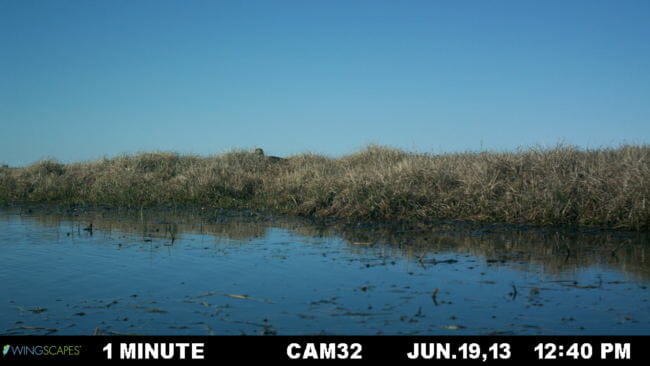
Here’s a drama in three acts. The year: 2013. The setting: a marshy patch of brown grass in Alaska’s National Petroleum Reserve. And there in the middle is a nesting female greater white-fronted goose. For a while, not much happens: the goose just sits on her eggs.
But then comes the second act. A small, fuzzy, white Arctic fox approaches the nest. Mother goose springs into action.
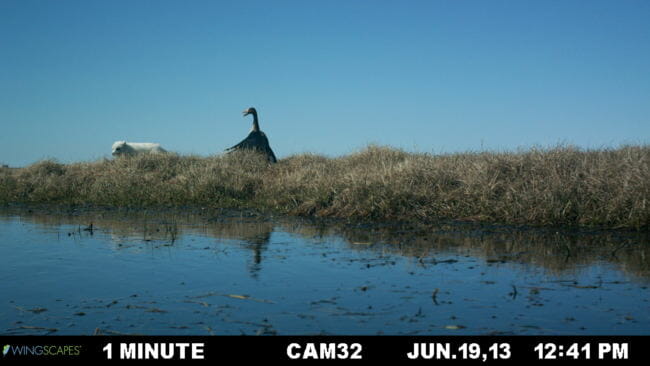
“Upright, wings spread, mouth open, very aggressive — she actually looks quite mean,” said Brandt Meixell, a researcher with the U.S. Geological Survey, narrating a series of photos taken by a camera set up about 20 feet from the goose’s nest.
But not mean enough to deter Mr. Fox. The tangle intensifies: in the next photo, the fox bares its teeth as the goose flaps her wings.
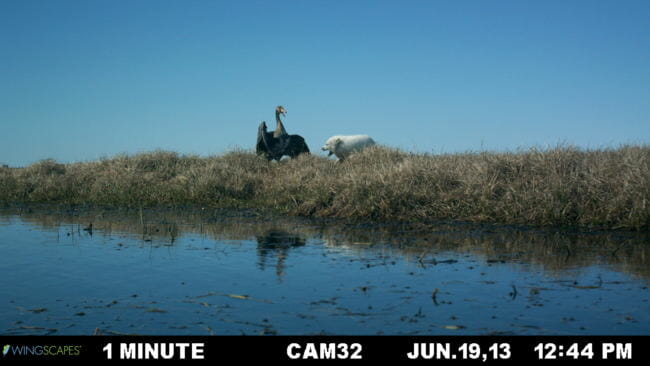
Finally, act three: the mother goose’s aggressive defense pays off, and the fox turns tail and leaves.
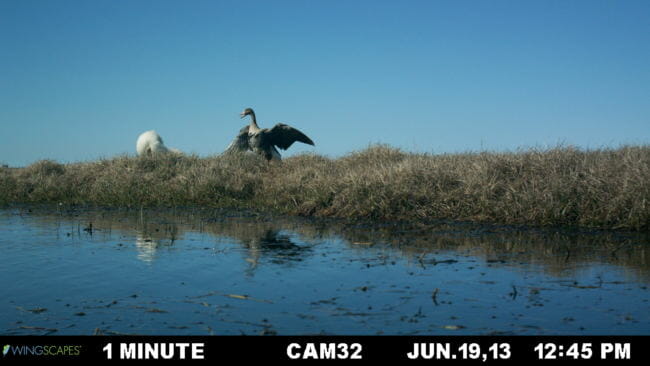
“And then one minute later, she’s back on her nest, relaxed, and it looks as though nothing happened,” Meixell said.
The moral of the story? Mother geese do not like to leave their nests. Meixell explained that’s because they need to protect their eggs from foxes, gulls and other Arctic opportunists.
“To be honest, the predators know where every goose nest is,” Meixell said.
So what happens if a new character enters the scene?
Oil companies have started to see a lot of potential in the National Petroleum Reserve-Alaska following several recent, big discoveries. But every summer, millions of migratory birds like the greater white-fronted goose descend on the reserve to lay eggs, molt their feathers and fatten up. A lot of the oil potential lies squarely in migratory bird habitat.
So Meixell and his colleagues wondered if industrial activity would drive geese away from their nests more often or for longer, leaving the eggs vulnerable to hungry predators.
A perfect opportunity to investigate came about in 2013 and 2014. There was a cleanup of an old Air Force radar station in the reserve, involving a lot of noisy machinery like vehicle traffic, heavy equipment and helicopter activity — things that seem likely to spook a greater white-fronted goose.
The scientists set up cameras at nests near the cleanup and at nests a few kilometers away, for comparison. Over the course of two summers, they collected millions of photos, of which 1.6 million were interpretable.
Those photos told a surprising story. Meixell pointed out a particularly striking example:
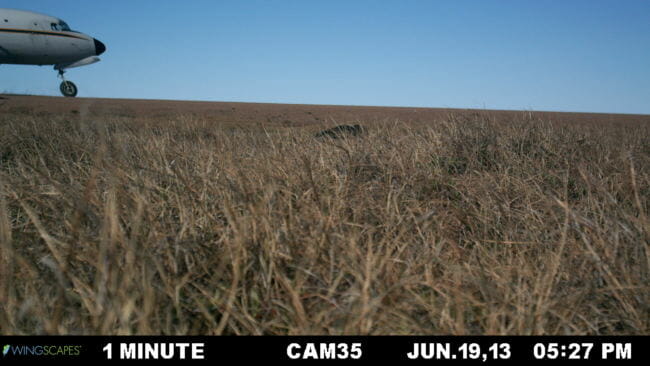
“Here’s a photo where there’s a female goose, and a DC-6 is landing on the runway, just about five meters from the nest,” Meixell said.
Amazingly, the goose stays put, even as the plane’s wing is about to pass right above the nest.
“She certainly notices it and makes the decision to remain and protect her eggs,” Meixell said.
Meixell and his colleagues collected a series of photos of white-fronted geese staying on their nests as planes flew by, backhoes dug up holes and helicopters buzzed overhead.
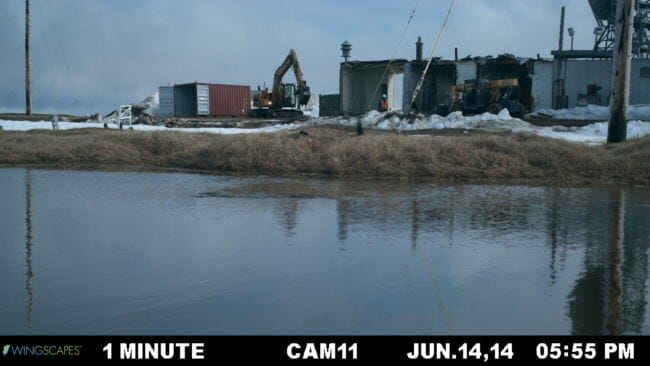
In the end, the scientists concluded that nearby industrial activity only had a minor effect — the geese close to the noisy cleanup did leave their nests for a few minutes longer each day on average, but it didn’t result in a lot more eggs getting munched up by predators.
In fact, the thing that had the biggest impact were the researchers. When they walked directly up to the nests to check on them, that’s when geese left the longest.
So does this mean the oil industry can go ahead and drill and the geese will be fine?
“Of course, as a scientist, I’m going to say that it’s much more complicated than that,” Meixell said.
Audrey Taylor, a migratory bird researcher and assistant professor of environmental studies at University of Alaska Anchorage, agreed.
“I think we don’t want to jump to the conclusion that industrial disturbance doesn’t affect birds in any way,” said Taylor, who wasn’t involved with the study.
Taylor said the study spells out some important lessons for oil companies. For example, it shows that it’s a good idea to avoid walking directly up to nesting geese, so companies could potentially document where nests are to avoid them.
But Taylor also said there are still questions about how the oil industry could impact migratory birds in the National Petroleum Reserve. For example, what happens if there’s industrial activity while the geese are molting? Every year, geese take refuge in the reserve while they shed and re-grow their flight feathers.
“Activity or disturbance during that time could certainly have a bigger effect because they’re going to be running away from it rather than flying,” Taylor said.
Taylor said that as the oil industry pushes further into the habitats of mother geese, foxes and all the other species living in the reserve, studies like this one are becoming a lot more important.
